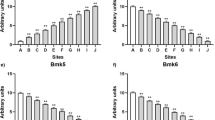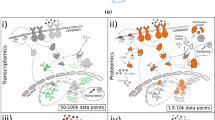Abstract
Environmental and health risk assessment projects involve processing of a large volume of uncertain information. To reduce uncertainties in the assessment process, the risk assessor evaluates a large volume of data from toxicological, exposure and health related databases. Being a data intensive assessment, for improved risk assessment, there is a need for these data to be harmonized and integrated by incorporating information from various sources and biological organizational criteria (e.g., gene, cellular, tissue, organ level health effects, if available). The main objective of this study is to have a front end or upstream approach towards an effective dynamic data fusion (DF)-based risk assessments. To achieve this goal, a generalized human health risk assessment and a system biology-based DF framework have been proposed. The proposed approach would be able to detect different trends and patterns and integrates various toxicological datasets from different biological organizational criteria (e.g., gene, cellular, tissue, organ level, if available) and integrates data from disparate sources. To demonstrate the effectiveness of the approach, both the proposed frameworks have been implemented in human health risk assessment for benzene originated from an illustrative example of a contaminated site. The application in this study shows that this approach can increase the efficiency of dynamic data integration and incorporation of toxicity pathway or system biology-based information in the human health risk analysis. Currently, the system biology facilitated DF framework is based on hypothesis driven modeling relationships between different bio-organizational criteria. Further work is needed to prove these relationships. For a data rich chemical example such as benzene, these relationships can be established based on the existing and the emerging knowledge-base on benzene toxicology.













Similar content being viewed by others
Notes
In general, the kernel operator can be basic arithmetic such as weighted averaging.
References
Allarakhia M, Wensley A (2007) Systems biology: a disruptive biopharmaceutical research paradigm. Technol Forecast Social Change 74(9):1643–1660
Alvisi S, Mascellani G, Franchini M, Bardossy A (2006) Water level forecasting through fuzzy logic and artificial neural network approaches. Hydrol Earth Syst Sci 10(1):1–17
Banks D, Datta G, Karr A, Lynch J, Niemi J, Vera F (2012) Bayesian CAR models for syndromic surveillance on multiple data streams: Theory and practice. Inf Fus 13(2):105–116
Barat S, Das A (2009) Systems biology markup language for cancer system. In: World congress on nature & amp; biologically inspired computing (NaBIC), 2009, pp 1584–1587
Baum KG, Helguera M, Krol A (2008) Fusion viewer: a new tool for fusion and visualization of multimodal medical data sets. J Digit Imaging 21(Suppl. 1):59–68
Bernardinelli L, De Marco R, Tinelli C (1987) Cancer mortality in an Italian rubber factory. British J Ind Med 44(3):187
Brett SM, Rodricks JV, Chinchilli VM (1989) Review and update of leukemia risk potentially associated with occupational exposure to benzene. Environ health Perspect 82:267–281
Chen R, Xie W, Wang L, Qin Q (2011) Adaptive remote sensing image fusion under the framework of data assimilation. Opt Eng 50(6):067006-1–067006-10
Crump, K S. (1992). “Exposure-response analyses of Pliofilm cohort.” Work supported by Western States Petroleum Association. Draft
Crump KS (1994) Risk of benzene-induced leukemia: a sensitivity analysis of the pliofilm cohort with additional follow-up and new exposure estimates. J Toxicol Environ Health A 42(2):219–242
Crump KS, Allen B (1984) Quantitative estimates of risk of leukemia from occupational exposure to benzene. Unpublished report prepared for the Occupational Safety and Health Administration by Science Research Systems, Inc., Ruston, LA
Cuzzolin F (2010) Credal semantics of Bayesian transformations in terms of probability intervals. Syst Man Cybern B 40(2):421–432
Dasarathy BV (1997) Sensor fusion potential exploitation-innovative architectures and illustrative applications. In: Proceedings of the IEEE
Dell’Orco M, Marinelli M (2009) Fuzzy data fusion for updating information in modeling drivers’ choice behavior. In: Proceedings of the intelligent computing 5th international conference on Emerging intelligent computing technology and applications, pp 1075–1084
Demotier S, Schon W, Denoeux T (2006) Risk assessment based on weak information using belief functions: a case study in water treatment. IEEE Trans Syst Man Cybern C Appl Rev 36(3):382–396
Dhurjati P, Mahadevan R (2008) Systems biology: the synergistic interplay between biology and mathematics. Can J Chem Eng 86(2):127–141
Esteban J, Starr A, Willetts R, Hannah P (2005) A review of data fusion models and architectures: towards engineering guidelines. Neural Comput Appl 14:273–281
Ferson S, Kreinovich V, Ginzburg L, Myers DS, Sentz K (2003) Constructing probability boxes and Dempster–Shafer structures. Citeseer
Gist GL, Burg JR (1997) Benzene—A review of the literature from a health effects perspective. Toxicol Ind health 13(6):661
Hack CE, Haber LT, Maier A, Shulte P, Fowler B, Lotz WG, Savage RE Jr (2010) A Bayesian network model for biomarker-based dose response. Risk Anal 30(7):1037–1051
Hájek P, Olej V (2008) Air quality modelling by Kohonen’s self-organizing feature maps and LVQ neural networks. WSEAS Trans Environ Dev 4(1):45–55
Health Canada (2009) Preliminary quantitative risk assessment guidance document (part I) and PQRA Spreadsheet, Ottawa
Health Canada (2010) Federal contaminated site risk assessment in Canada, part V:guidance on complex human health detailed quantitative risk assessment for chemicals (DQRACHEM), Version 1.0, draft, Ottawa
Johnson KJ, Minor CP, Guthrie VN, Rose-Pehrsson SL (2009) Intelligent data fusion for wide-area assessment of UXO contamination. Stoch Environ Res Risk Assess 23(2):237–252
Khatri P, Draghici S, Tarca AL, Hassan SS, Romero R (2007) A system biology approach for the steady-state analysis of gene signaling networks. In: Proceedings of the Congress on pattern recognition 12th Iberoamerican conference on Progress in pattern recognition, image analysis and applications, pp 32–41
Kitano H (2001) Systems biology: toward system-level understanding of biological systems. Foundations of systems biology, foundation of systems biology, MIT Press, Cambridge
Lanckriet GRG, Deng M, Cristianini N, Jordan MI, Noble WS (2004) Kernel-based data fusion and its application to protein function prediction in yeast. Proceedings of the Pacific Symposium on Biocomputing, pp 300–311
Lanckriet GRG, De Bie T, Cristianini N (2004a) A statistical framework for genomic data fusion. Bioinformatics 20:2626–2635
Lanckriet GRG, Cristianini N, Bartlett P, Ghaoui LE, Jordan MI (2004b) Learning the kernel matrix with semidefinite programming. J Mach Learn Res 5:27–72
Llinas J, Hall DL (1998) An introduction to multi-sensor data fusion. Proceedings of the 1998 IEEE international symposium on circuits and systems, ISCAS’98, Cat. No. 98CH36187, IEEE, pp 537–540
Llinas J, Bowman C, Rogova G, Steinberg A, Waltz E, White F (2004) Revisiting the JDL data fusion model II. In: Svensson P, Schubert J (eds) Proceedings of the seventh international conference on information fusion (FUSION 2004)
Martin A, Osswald C (2006) A new generalization of the proportional conflict redistribution rule stable in terms of decision. Advances and applications of DSmT for information fusion: collected works, vol 2. American Research Press, Rehoboth, pp 69–88
NAS (2009) Science and decisions: advancing risk assessment
Osei-Bryson KM (2004) Generating consistent subjective estimates of the magnitudes of causal relationships in fuzzy cognitive maps. Comput Oper Res 31(8):1165–1175
Papakostas G, Boutalis Y, Koulouriotis D, Mertzios B (2008) Fuzzy cognitive maps for pattern recognition applications. Int J Pattern Recognit Artif Intell 22(8):1461–1486
Parkes H, Veys C, Waterhouse J (1982) Cancer mortality in the British rubber industry. British J Ind Med 39(3):209
Paustenbach DJ, Bass RD, Price P (1993) Benzene toxicity and risk assessment, 1972–1992: implications for future regulation. Environ Health Perspect 101(Suppl 6):177–200
Paxton M, Chinchilli V, Brett S, Rodricks J (1992) Reanalysis and update of the leukemogenic risk associated with occupational benzene exposure in the pliofilm cohort. Environ Corporation, Arlington, VA
Ping J, Chen B, Husain T (2010) Risk assessment of ambient air quality by stochastic-based fuzzy approaches. Environ Eng Sci 27(3):233–246
Pyatt D, Hays S (2010) A review of the potential association between childhood leukemia and benzene. Chem Biol Interact 184(1–2):151–164
Rinsky RA, Young RJ, Smith AB (1981) Leukemia in benzene workers. Am J Ind Med 2(3):217–245
Rinsky RA, Smith AB, Hornung R, Filloon TG, Young RJ, Okun AH, Landrigan PJ (1987) Benzene and leukemia. An epidemiologic risk assessment. N Engl J Med 316:1044–1050
Sadiq R, Rodriguez MJ (2005) Interpreting drinking water quality in the distribution system using Dempster–Shafer theory of evidence. Chemosphere 59(2):177–188
Sadiq R, Kleiner Y, Rajani B (2006) Estimating risk of contaminant intrusion in distribution networks using fuzzy rule-based modeling. In: Proceedings of the NATO advanced research workshop on computational models of risks to infrastructure, Primosten, Croatis, 9–13 May 2006, pp 318–327
Sadiq R, Islam MS, Zargar A, Dyck R (2011) Risk assessment framework for contaminated sites: a critical review and potential applications of data fusion methods. Regions and Programs Branch, Health Canada, Calgary, AB, pp 121
Satpathy S, Mohapatra A (2009) A data fusion based digital investigation model as an effective forensic tool in the risk assessment and management of cyber security systems. In: The 7th international conference on computing, communications and control technologies
Satpathy S, Pradhan SK, Ray BB (2010) A digital investigation tool based on data fusion in management of cyber security systems. Int J Inf Technol 2(2):561–565
Schmitt KA (2006) Combining information in human health risk assessment
Sentz K, Ferson S (2002) Combination of evidence in Dempster–Shafer theory
Smarandache F, Dezert J (2006) Advances and applications of DSmT for information fusion, vol. 2. American Research Press, Rehobooth
Smarandache F, Dezert J (2009) Advances and applications of DSmT for information fusion, American Research Press, Rehobooth
Smith MT (2010) Advances in understanding benzene health effects and susceptibility. Annu Rev Public Health 31:133–148
Sossai C, Bison P (2001) Fusion of symbolic knowledge and uncertain information in robotics. Int J Intell Syst 16:1299–1320
Stach W, Kurgan L, Pedrycz W, Reformat M (2005) Evolutionary development of fuzzy cognitive maps. In: The 14th IEEE international conference on fuzzy systems, 2005, FUZZ’05, IEEE, pp 619–624
Steinberg AN, Bowman CL (2004) Rethinking the JDL data fusion levels.In: NSSDF, JHAPL
Steinberg AN, Bowman CL, White FE (1999) Revisions to the JDL data fusion model
Teuschler LK, Groten JP, Hertzberg RC, Mumtaz MM, Rice G (2001) Environmental chemical mixtures risk assessment: current approaches and emerging issues. Comments Toxicol 7(5–6):453–494
USEPA (1985) Interim quantitative cancer unit risk estimates due to inhalation of benzene. Prepared by the carcinogen assessment group, Office of Research and Development, Washington, DC. EPA/600/X-85-022
Wheeler T (2006) Collaborative multidiscipline/multiscale analysis, modeling, simulation and integration in complex systems: system biology. In: computational science and its applications-ICCSA 2006, Springer, pp 654–664
Whitney PD, Posse C, Lei XC (2005) Towards a unified approach to information integration—a review paper on data/information fusion
Wong TT, Agar JG (2009) Development of a technically defensible soil gas sampling strategy for vapour intrusion assessments. Can Geotech J 46(1):102–113
Yeol JW, Barjis I, Ryu YS (2005) System biology: from DNA to protein by automata networks. In: International conference on intelligent sensing and information processing, pp 523–528
Zadeh LA (1965) Fuzzy sets. Inf Control 8(3):338–353
Zaffalon M, Fagiuoli E (2003) Tree-based credal networks for classification. Reliab Comput 9(6):487–509
Zargar A, Dyck R, Islam MS, Mohapatra A, Sadiq R (2013) Data fusion methods for human health risk assessment: review and application. J Hum Ecol Risk Assess (accepted)
Zhang L, McHale CM, Rothman N, Li G, Ji Z, Vermeulen R, Hubbard AE, Ren X, Shen M, Rappaport SM, North M, Skibola CF, Yin S, Vulpe C, Chanock SJ, Martyn TS, Lan Q (2010) Systems biology of human benzene exposure. Chem Biol Interact 184(1–2):86–93
Zhang J, Shang J, Li A (2011) A Bayesian network based algorithm for gene regulatory network reconstruction. In: IEEE international conference on signal processing, communications and computing (ICSPCC)
Disclaimer
This paper uses material from a report that was prepared under contract to Health Canada (Prairie Region), contaminated sites, environmental health program. However, the views and opinions, if any, expressed in this paper and the report does not necessarily reflect the opinion of Health Canada nor is it Health Canada guidance.
Author information
Authors and Affiliations
Corresponding author
Rights and permissions
About this article
Cite this article
Islam, M.S., Zargar, A., Dyck, R. et al. Data fusion-based risk assessment framework: an example of benzene. Int J Syst Assur Eng Manag 3, 267–283 (2012). https://doi.org/10.1007/s13198-012-0136-3
Received:
Revised:
Published:
Issue Date:
DOI: https://doi.org/10.1007/s13198-012-0136-3




